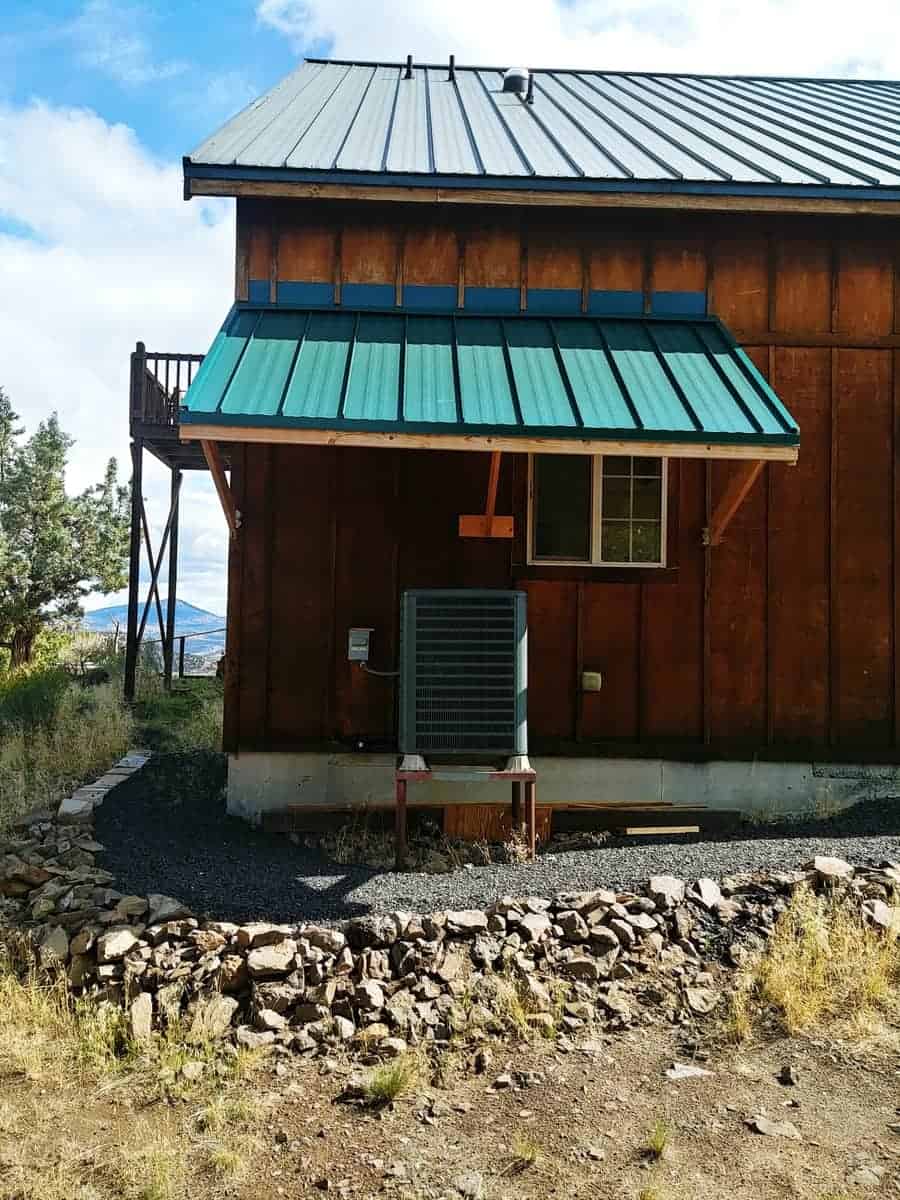What a great idea to have a heat pump roof and keep the snow and bad weather to a minimum. It can extend the life of your equipment and even improve efficiency.
But let’s do it the right way. Over the years I’ve been working on heat pumps, I have seen some really good roofs over them and some that I have had to inform my customers that they should tear down; it’s doing more harm than good.
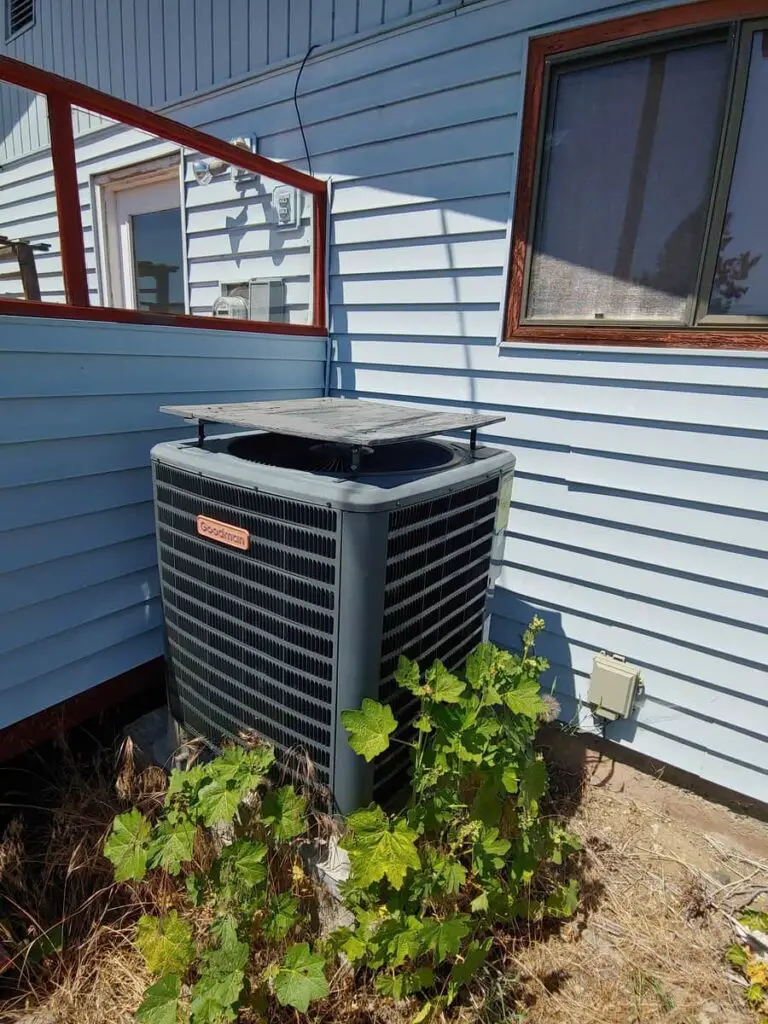
Every heat pump manufacturer has installation instructions that are available online. In these instructions, you will find a section called “clearances.” If you follow that guideline, your warranty will be intact, and you can build a roof over your heat pump according to the specifications that your manufacturer has engineered to protect and provide the equipment with the proper airflow.

I have found installation instructions online for nearly every model I’ve worked on. You can, too. Just do an internet search for your model number followed by the words “installation instructions”, then look for “clearances”.
Under the section titled Clearances, you will find all the information you need to keep enough airflow around your outdoor unit, including the top.
These installation instructions were not written with the intent of you building a roof over your outdoor unit but rather to keep the installers from placing the unit in the wrong place where obstructions would hinder airflow.
The distance from the unit to your cover will vary depending on your manufacturer. Using the correct distance for your unit will keep your warranty in effect.
Believe me when I say, “Online forums are not very dependable when looking for this information.“
When you read the forums for this information, each contributor tells everyone else to make the clearance to different dimensions. That’s the problem. Take the time to find your specific data regarding your heat pump and protect your warranty.
Some warmer areas where heat pumps are often used would not need any cover. Also, in certain climates, water vapor is pushed up into the cover and eve of the house, causing issues with mold and maintenance. But, in areas where snow and ice are a problem, a covering of some kind can significantly aid in keeping the heat pump clear of snow and ice falling off a roof.
Two types of heat pumps are used in residential applications when considering a roof over your unit, and they are very different.
- Top discharge
- Side discharge
How To Build A Roof Over A Top Discharge Heat Pump.
The air going out the top of your heat pump must be freely discharged. If the roof blocks the air or cover you build in any way, it could be recirculated through the unit, lowering your efficiency and damaging the system over time.
Icicles falling from a roof can severely damage the fan and coils of this top discharge unit. Either can be expensive, but some insurance will cover this damage.
This next image is perhaps the most difficult of the two heat pump snow shelter plans because it would require working off a ladder and supporting the roof to hold much more snow and ice than the side discharge unit.
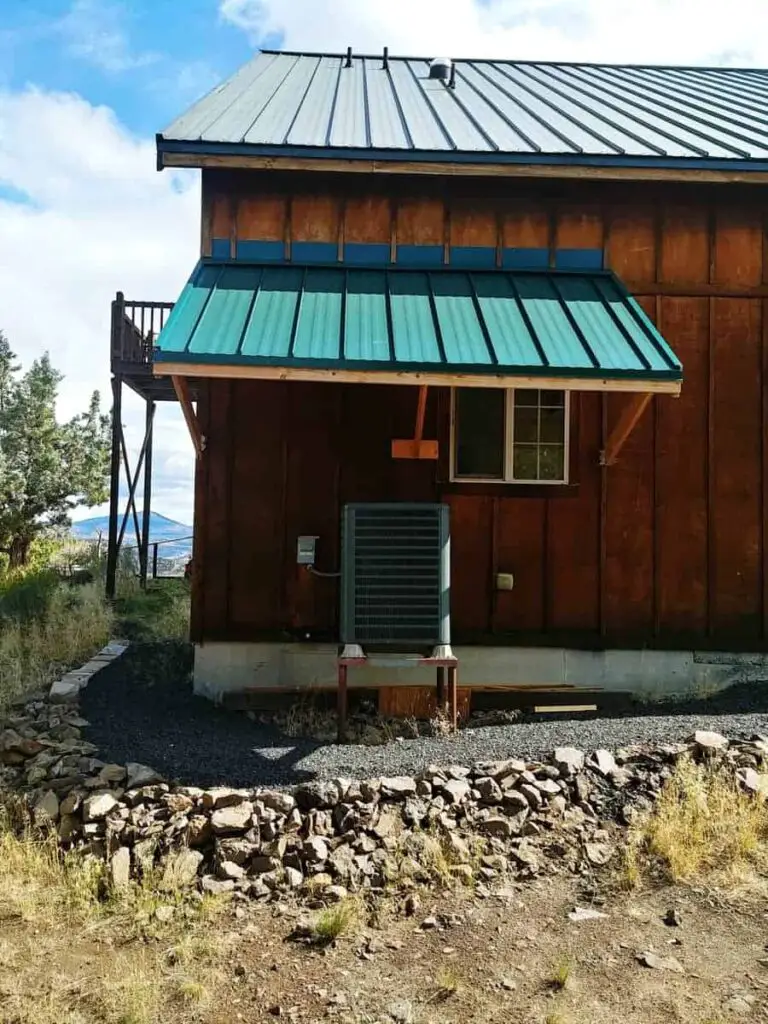
Construction type and materials would make no difference. It would just have to suit your taste in its completed appearance.
Building something aesthetically pleasing is always best, especially when considering selling your home. You should plan your cover to be large enough to help keep the sides of the heat pump from building up with snow and ice.
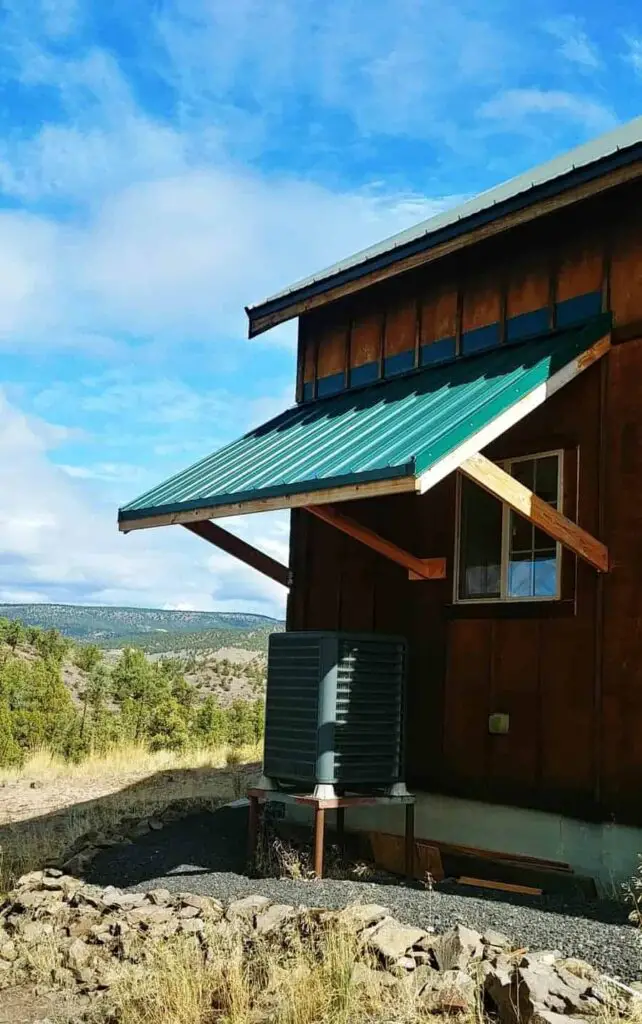
If drifting snow is a problem piling up around your heat pump, perhaps a snow drift fence a few feet away or more from the unit would help. Again, keep airflow through the unit in mind.
Building a Roof Over A Side Discharge Heat Pump
What an easy job that can be appealing or an addition to installing a side discharge unit. All of the new ductless or mini split units are side discharge.
If yours is mounted on the side of the house with brackets, it makes it even more attractive. Maybe it’s not appealing to all. You have to be in the business to think it’s pretty. Keep it high enough on the wall to stay out of your area’s worst weather.
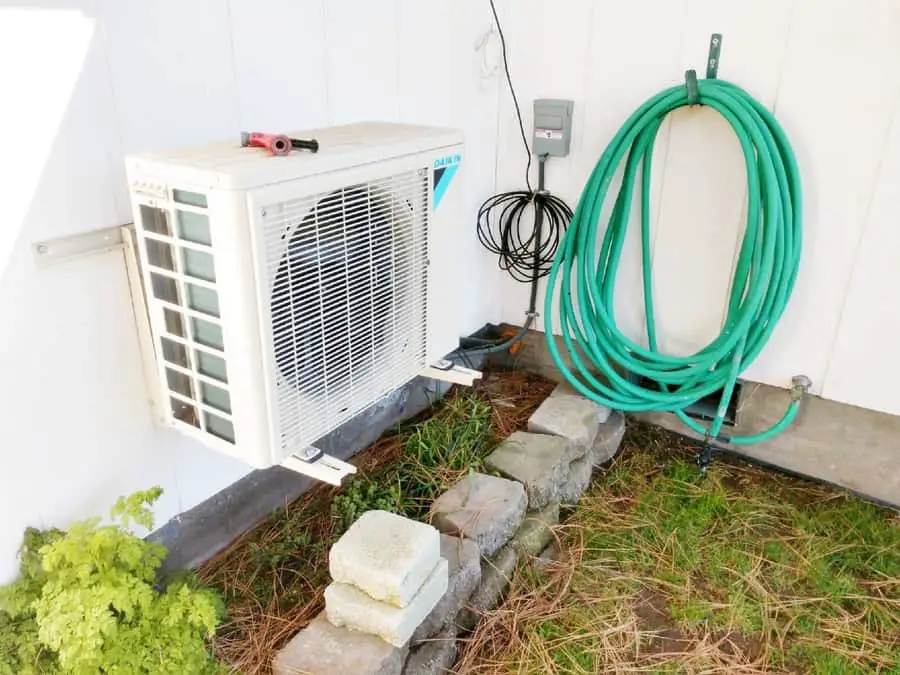
With your unit mounted on the wall or on a pad with blocks to keep it up, you are set to build that cover and keep that outdoor unit looking pristine for many years.
This is an excellent DIY project that almost anyone can handle. You don’t need an engineer or an architect. Just grab your choice of construction materials and start assembling your cover.

How To Further Protect My Heat Pump From Snow And Ice
During those foul weather moments when the temperatures dip into your coldest times, and you notice that ice is building under your heat pump, what can you do, or what should you have done to prepare?
Prevention is the first step. Keeping the area clean and clear around the heat pump is vital. Heat pumps have to breathe.
Having risers under the unit will aid in keeping the heat pump clean and able to drain when in defrost mode. You can read more about how risers can improve the life of your heat pump or even your air conditioner by reading here.
The defrost mode occurs in the winter when ice forms on the coil. That’s the whooshing noise you hear every so often. A timer with three settings is inside the control panel of your heat pump. It should be set to your particular area according to how often it should defrost. The options for defrosting are usually 30, 60, and 90 minutes apart.
When the unit defrosts, the melting ice must drain down through holes in the bottom of your unit. If those holes are plugged with leaves and junk, the ice will build much faster than if they were clear and able to let the water out. Turn the power off to your heat pump. Ensure you turn off the correct breaker and unplug or turn off the disconnect at the unit.
Remove the top of the unit. Get help to hold the top, as the wires to the motor will still be attached. Get in there with a suitable hose and nozzle attached and blast all that debris out of the bottom. While at it, you can clean some coils, but be careful not to put too much water pressure on those aluminum fins. The coil fins are pretty fragile and will flatten with too much pressure.
Smashed coil fins reduce efficiency.
This is a needed part of maintenance and should be done as often as stuff begins to accumulate. Your new roof will aid in keeping it clear, but it won’t be a fix-all.
Should I Cover My Heat Pump In Winter?
A direct cover, like wrapping it with plastic or canvas to protect it, would ruin your heat pump. Heat pumps are made to operate year-round in all kinds of weather. Your heat pump “outdoor unit” is part of a system. Combined with an indoor section called an “air handler.”
These two units work together under the control of you and your thermostat. The outdoor unit creates as much heat as possible when you want heat, depending on outside temperatures.
During severe weather, it may turn on some auxiliary heat to give it a boost and allow it to shut off. You may decide to add a roof over your outdoor unit as this article has prescribed.
How To Keep Other Debris From Falling Into Your Heat Pump.
A little trick you must be careful with can prevent many unwanted leaves and pine needles from falling into the bottom of your heat pump. Look at all that unwanted junk in the picture below: leaves, nuts, and a mouse house. The bottom drain holes in this unit are plugged. You are causing more rust and lack of drainage.
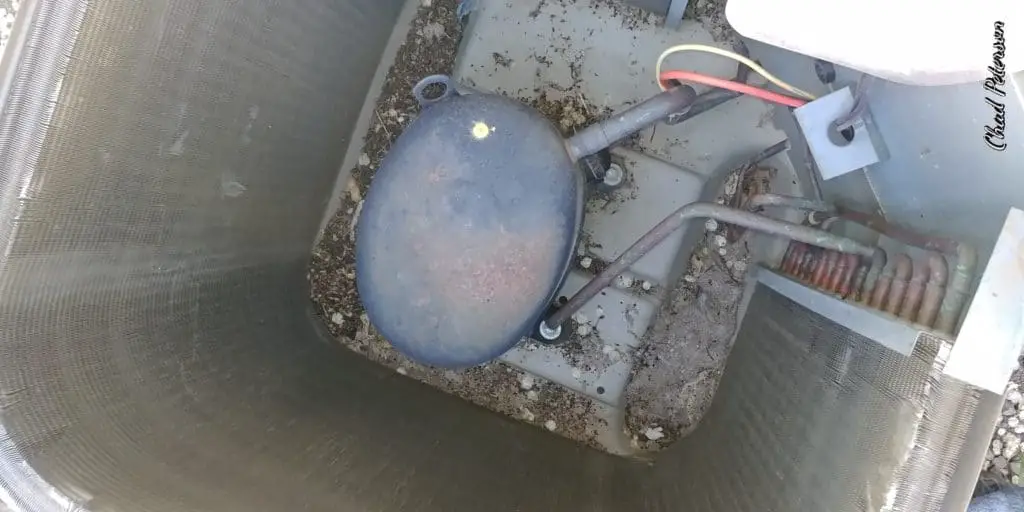
Now, remember to be careful. Anything that disrupts the airflow through your heat pump reduces the efficiency. It would be advisable to have a technician check pressure before and after altering any airflow, no matter how insignificant it may seem.
What’s pictured below shows hardware cloth over a unit. I just draped some over this dead unit to demonstrate the idea.
You’ll find it at almost any hardware store. If you feel the force of the fan lifting whatever you decide to use, it’s too dense. Find something more open.
Even some small gauge wire strung across the top in an opposing direction to the existing louvers will help stop debris from entering your heat pump.
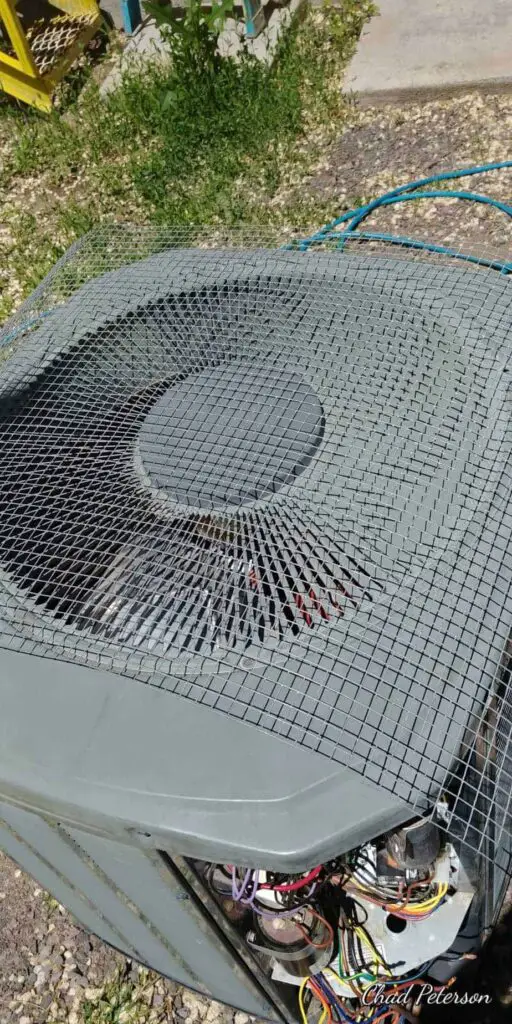
A Great Tip If You Want To Cover Your Heat Pump Or AC Unit
You could cover your AC with this hardware cloth, but covering an AC-only unit in winter makes more sense. Be sure you know the difference between an AC-only unit and a heat pump. So many people get this confused. Ensure that when you cover your AC, turn off the breaker and pull the disconnect while the cover is on.
More than once, an AC has been turned on when someone just inadvertently turned on the AC with a cover on and ruined the AC.
Conclusion
So, can I put a roof over my heat pump? Yes, you can.
Use common sense and do some research into heat pump snow shelter plans. Follow the installation instructions that come with your equipment. Instructions are available online with a simple search if you don’t have them.
Rooftop heat pump units are an eyesore, in my opinion. I’m not even sure if they are very practical. It’s almost impossible to hide or cover.
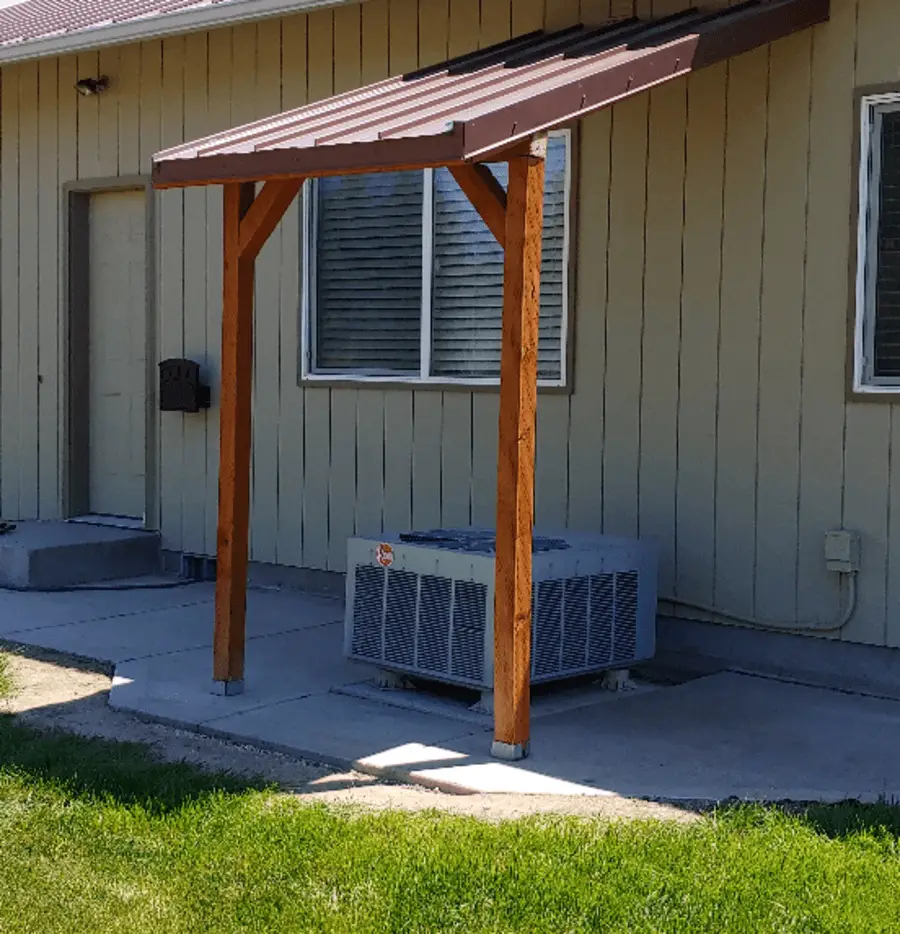
A roof for heat pump units should be aesthetically pleasing and not distracting. Make it blend in with the type of construction consistent with your home’s exterior.

